Healthy Aging Indicators
According to the World Health Organization, healthy aging is defined as "the process of developing and maintaining the functional ability that enables well-being in older age." This dashboard includes indicators that can be used by organizations who engage in community health improvement efforts to further their understanding of healthy aging, and measure population-level health status related to aging.
Indicator Gauge Icon Legend
Legend Colors
Red is bad, green is good, blue is not statistically different/neutral.
Compared to Distribution
 the value is in the best half of communities.
the value is in the best half of communities.
 the value is in the 2nd worst quarter of communities.
the value is in the 2nd worst quarter of communities.
 the value is in the worst quarter of communities.
the value is in the worst quarter of communities.
Compared to Target
 meets target;
meets target;  does not meet target.
does not meet target.
Compared to a Single Value
 lower than the comparison value;
lower than the comparison value;
 higher than the comparison value;
higher than the comparison value;
 not statistically different from comparison value.
not statistically different from comparison value.
Trend

 non-significant change over time;
non-significant change over time; 
 significant change over time;
significant change over time;  no change over time.
no change over time.
Compared to Prior Value
 higher than the previous measurement period;
higher than the previous measurement period;
 lower than the previous measurement period;
lower than the previous measurement period;
 no statistically different change from previous measurement period.
no statistically different change from previous measurement period.
 Significantly better than the overall value
Significantly better than the overall value
 Significantly worse than the overall value
Significantly worse than the overall value
 Significantly different than the overall value
Significantly different than the overall value
 No significant difference with the overall value
No significant difference with the overall value
 No data on significance available
No data on significance available
State: Ohio
Health / Cancer
State: Ohio Cancer: Medicare Population
State: Ohio Cancer: Medicare Population
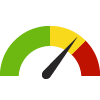



State: Ohio Mammography Screening: Medicare Population
State: Ohio Mammography Screening: Medicare Population




State: Ohio
Health / Diabetes
State: Ohio Diabetes: Medicare Population
State: Ohio Diabetes: Medicare Population




State: Ohio Diabetic Monitoring: Medicare Population
State: Ohio Diabetic Monitoring: Medicare Population
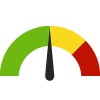



State: Ohio
Health / Health Care Access & Quality
State: Ohio Adults with Medicare Health Insurance
State: Ohio Adults with Medicare Health Insurance



State: Ohio Non-Physician Primary Care Provider Rate
State: Ohio Non-Physician Primary Care Provider Rate



State: Ohio Preventable Hospital Stays: Medicare Population
State: Ohio Preventable Hospital Stays: Medicare Population
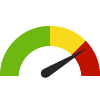



State: Ohio Primary Care Provider Rate
State: Ohio Primary Care Provider Rate



State: Ohio
Health / Health Information Technology
State: Ohio Persons with an Internet Subscription
State: Ohio Persons with an Internet Subscription



State: Ohio
Health / Heart Disease & Stroke
State: Ohio Atrial Fibrillation: Medicare Population
State: Ohio Atrial Fibrillation: Medicare Population




State: Ohio Heart Failure: Medicare Population
State: Ohio Heart Failure: Medicare Population




State: Ohio Hyperlipidemia: Medicare Population
State: Ohio Hyperlipidemia: Medicare Population




State: Ohio Ischemic Heart Disease: Medicare Population
State: Ohio Ischemic Heart Disease: Medicare Population




State: Ohio Stroke: Medicare Population
State: Ohio Stroke: Medicare Population




State: Ohio
Health / Immunizations & Infectious Diseases
State: Ohio Flu Vaccinations: Medicare Population
State: Ohio Flu Vaccinations: Medicare Population
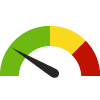



State: Ohio Pneumonia Vaccinations: Medicare Population
State: Ohio Pneumonia Vaccinations: Medicare Population
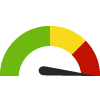



State: Ohio
Health / Mental Health & Mental Disorders
State: Ohio Depression: Medicare Population
State: Ohio Depression: Medicare Population




State: Ohio Mental Health Provider Rate
State: Ohio Mental Health Provider Rate



State: Ohio
Health / Mortality Data
State: Ohio Life Expectancy
State: Ohio Life Expectancy


State: Ohio Premature Death
State: Ohio Premature Death


State: Ohio
Health / Older Adults
State: Ohio Adult Day Care Spending-to-Income Ratio
State: Ohio Adult Day Care Spending-to-Income Ratio


State: Ohio Adults 65+ with a Disability
State: Ohio Adults 65+ with a Disability


State: Ohio Adults 65+ with a Hearing Difficulty
State: Ohio Adults 65+ with a Hearing Difficulty


State: Ohio Adults 65+ with a Self-Care Difficulty
State: Ohio Adults 65+ with a Self-Care Difficulty


State: Ohio Adults 65+ with a Vision Difficulty
State: Ohio Adults 65+ with a Vision Difficulty


State: Ohio Adults 65+ with an Independent Living Difficulty
State: Ohio Adults 65+ with an Independent Living Difficulty








State: Ohio Grandparents Living in a Household
State: Ohio Grandparents Living in a Household



State: Ohio Median Household Income: Householders 65+
State: Ohio Median Household Income: Householders 65+



State: Ohio
Health / Other Conditions
State: Ohio Chronic Kidney Disease: Medicare Population
State: Ohio Chronic Kidney Disease: Medicare Population




State: Ohio Osteoporosis: Medicare Population
State: Ohio Osteoporosis: Medicare Population








State: Ohio
Health / Prevention & Safety
State: Ohio Age-Adjusted Death Rate due to Falls
State: Ohio Age-Adjusted Death Rate due to Falls


State: Ohio
Health / Respiratory Diseases
State: Ohio Asthma: Medicare Population
State: Ohio Asthma: Medicare Population




State: Ohio COPD: Medicare Population
State: Ohio COPD: Medicare Population




State: Ohio
Health / Tobacco Use
State: Ohio Tobacco Use: Medicare Population
State: Ohio Tobacco Use: Medicare Population



State: Ohio
Health / Weight Status
State: Ohio Obesity: Medicare Population
State: Ohio Obesity: Medicare Population



State: Ohio
Community / Civic Engagement
State: Ohio Voter Turnout: Presidential Election
State: Ohio Voter Turnout: Presidential Election



State: Ohio
Community / Demographics
State: Ohio Population Over Age 65 (Count)
State: Ohio Population Over Age 65 (Count)

State: Ohio
Community / Social Environment


State: Ohio People 65+ Living Alone
State: Ohio People 65+ Living Alone



State: Ohio People 65+ Living Alone (Count)
State: Ohio People 65+ Living Alone (Count)

State: Ohio
Community / Transportation
State: Ohio Households without a Vehicle
State: Ohio Households without a Vehicle



State: Ohio
Economy / Housing & Homes




State: Ohio
Economy / Poverty
State: Ohio People 65+ Living Below Poverty Level
State: Ohio People 65+ Living Below Poverty Level



State: Ohio People 65+ Living Below Poverty Level (Count)
State: Ohio People 65+ Living Below Poverty Level (Count)



